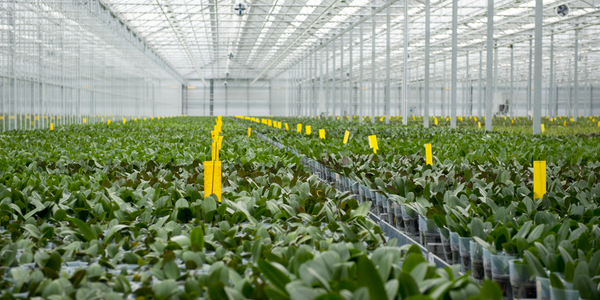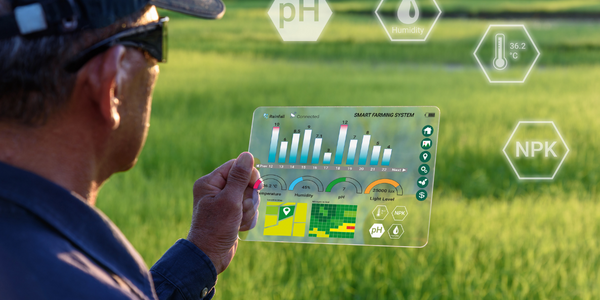SYSPRO Case Study: Suhor Industries
公司规模
Large Corporate
地区
- America
国家
- United States
产品
- SYSPRO ERP
- Microsoft SQL
- Microsoft Windows 2000
- Citrix Metaframe
技术栈
- ERP Software
- Microsoft SQL
- Microsoft Windows 2000
- Citrix Metaframe
- Internet-based VPN
实施规模
- Enterprise-wide Deployment
影响指标
- Productivity Improvements
- Customer Satisfaction
- Brand Awareness
- Digital Expertise
技术
- 功能应用 - 企业资源规划系统 (ERP)
- 应用基础设施与中间件 - 数据库管理和存储
适用行业
- 建筑与基础设施
- 农业
适用功能
- 商业运营
- 质量保证
- 销售与市场营销
用例
- 库存管理
- 补货预测
- 过程控制与优化
- 远程协作
- 远程控制
服务
- 系统集成
- 软件设计与工程服务
- 培训
关于客户
Suhor Industries, based in Overland Park, Kansas, is a highly diversified company with five divisions and 36 manufacturing locations in 11 states. Originally founded in 1933 as a manufacturer of concrete burial vaults, Suhor has expanded its product range to include burial vaults, monuments and memorials, veterans memorials, engraved brick pavers for fundraisers, retaining wall blocks, wastewater systems, and agricultural products. The company now boasts over 80 sites, including 36 manufacturing locations and 19 warehouses, with 700 employees processing more than 10,000 orders per month. Suhor’s products are distributed regionally and nationally through diversified channels, catering to funeral homes, retail outlets, contractors, communities, and veteran groups. The company prides itself on offering quality products backed by quality service, responding like a local company despite its national presence.
挑战
This ongoing drive toward quality growth and the necessity to become Y2K compliant drove the company to seek a new ERP software solution in 1998. Suhor had been experiencing the problems common to a company using an evolving set of inflexible software programs. Moreover, each location was responsible for backing up its own data. Without a central repository, a location crash and lack of data back-up would result in a loss of the data. According to Jeanette Geiser, Suhor Treasurer, the company quickly realized that future profitable growth could only be accommodated by centralizing financial information and consolidating data for budgeting analyses and control purposes.
解决方案
Suhor established a list of new system requirements, including a highly automated solution, accounting software to accommodate multiple locations, easy system interface for remote users, comprehensive inventory tracking, and system scalability. After evaluating candidates, SYSPRO ERP software was selected for its excellent manufacturing and production control system, depth of functionality, and ability to capture detailed data. The SYSPRO software operates on Microsoft SQL on a Microsoft Windows 2000 platform and Citrix Metaframe, connecting all Suhor locations through an Internet-based VPN. Of the 64 licensed system users, 50 are online concurrently. The software’s flexibility, real-time inventory tracking, and ability to consolidate sales information have enabled Suhor to grow efficiently, minimize inventory, and assist with forecasting and inventory planning. The centralized data storage under corporate control has also enhanced security and reduced dependency on regional offices for data management.
运营影响
数量效益

Case Study missing?
Start adding your own!
Register with your work email and create a new case study profile for your business.
相关案例.

Case Study
Intelligent Farming with ThingWorx Analytics
Z Farms was facing three challenges: costly irrigation systems with water as a limited resource, narrow optimal ranges of soil moisture for growth with difficult maintenance and farm operators could not simply turn on irrigation systems like a faucet.

Case Study
IoT System for Tunnel Construction
The Zenitaka Corporation ('Zenitaka') has two major business areas: its architectural business focuses on structures such as government buildings, office buildings, and commercial facilities, while its civil engineering business is targeted at structures such as tunnels, bridges and dams. Within these areas, there presented two issues that have always persisted in regard to the construction of mountain tunnels. These issues are 'improving safety" and "reducing energy consumption". Mountain tunnels construction requires a massive amount of electricity. This is because there are many kinds of electrical equipment being used day and night, including construction machinery, construction lighting, and ventilating fan. Despite this, the amount of power consumption is generally not tightly managed. In many cases, the exact amount of power consumption is only ascertained when the bill from the power company becomes available. Sometimes, corporations install demand-monitoring equipment to help curb the maximum power demanded. However, even in these cases, the devices only allow the total volume of power consumption to be ascertained, or they may issue warnings to prevent the contracted volume of power from being exceeded. In order to tackle the issue of reducing power consumption, it was first necessary to obtain an accurate breakdown of how much power was being used in each particular area. In other words, we needed to be able to visualize the amount of power being consumed. Safety, was also not being managed very rigorously. Even now, tunnel construction sites often use a 'name label' system for managing entry into the work site. Specifically, red labels with white reverse sides that bear the workers' names on both sides are displayed at the tunnel work site entrance. The workers themselves then flip the name label to the appropriate side when entering or exiting from the work site to indicate whether or not they are working inside the tunnel at any given time. If a worker forgets to flip his or her name label when entering or exiting from the tunnel, management cannot be performed effectively. In order to tackle the challenges mentioned above, Zenitaka decided to build a system that could improve the safety of tunnel construction as well as reduce the amount of power consumed. In other words, this new system would facilitate a clear picture of which workers were working in each location at the mountain tunnel construction site, as well as which processes were being carried out at those respective locations at any given time. The system would maintain the safety of all workers while also carefully controlling the electrical equipment to reduce unnecessary power consumption. Having decided on the concept, our next concern was whether there existed any kind of robust hardware that would not break down at the construction work site, that could move freely in response to changes in the working environment, and that could accurately detect workers and vehicles using radio frequency identification (RFID). Given that this system would involve many components that were new to Zenitaka, we decided to enlist the cooperation of E.I.Sol Co., Ltd. ('E.I.Sol') as our joint development partner, as they had provided us with a highly practical proposal.

Case Study
Greenhouse Intelligent Monitoring and Control Solution
Farming Orchids is the most successful form of precision farming in Taiwan, and also the most exported flower. Orchids need a specific temperature and humidity conditions to grow and bloom, and its flowering time may not be in line with market demands, so the price collapses when there is overproduction. Therefore, some farmers began to import automated greenhouse control systems for breeding and forcing, which not only improves quality, but also effectively controls the production period and yield to ensure revenue. In 2012, an orchid farmer built a Forcing Greenhouse of about 200 pings (approximately 661 Square Meters) in Tainan, Taiwan. The system integrator adopted Advantech’s APAX-5000 series programmable automation controllers to build the control platform, coupled with Advantech WebAccess HMI/SCADA software, to achieve cloud monitoring. The staff of the orchid field can monitor important data anytime via smart phone, iPad, and other handheld devices, and control the growth and flowering conditions. System requirements: In the past, most environmental control systems of orchid greenhouses in Taiwan used PLCs (Programmable Logic Controller) with poorscalability and control, and could not be connected to the Internet formonitoring from the cloud. For advanced database analysis and networking capability, the PC platform must be adopted. Therefore, PAC Systems (Programmable Automation Controller) with both PLC programming capabilities andPC functions is a better choice.The environmental control of the Orchid greenhouse switches on and off devices like fan, shade net, cooling/heat pump, liquid flow control, water-cooling wall etc. It is controlled by a control panel of electric controllers, and is driven by a motor, to adjust the greenhouse temperature, humidity, and other environmental conditions to the set parameters.

Case Study
Enabling Internet of Things Innovation in Agriculture
DigiBale, wanted to apply technology know-how and IP from implementations successfully to more agriculture sectors including cotton, forestry, sugarcane and cattle. However, farmers and growers still have worries about the connected technology.




